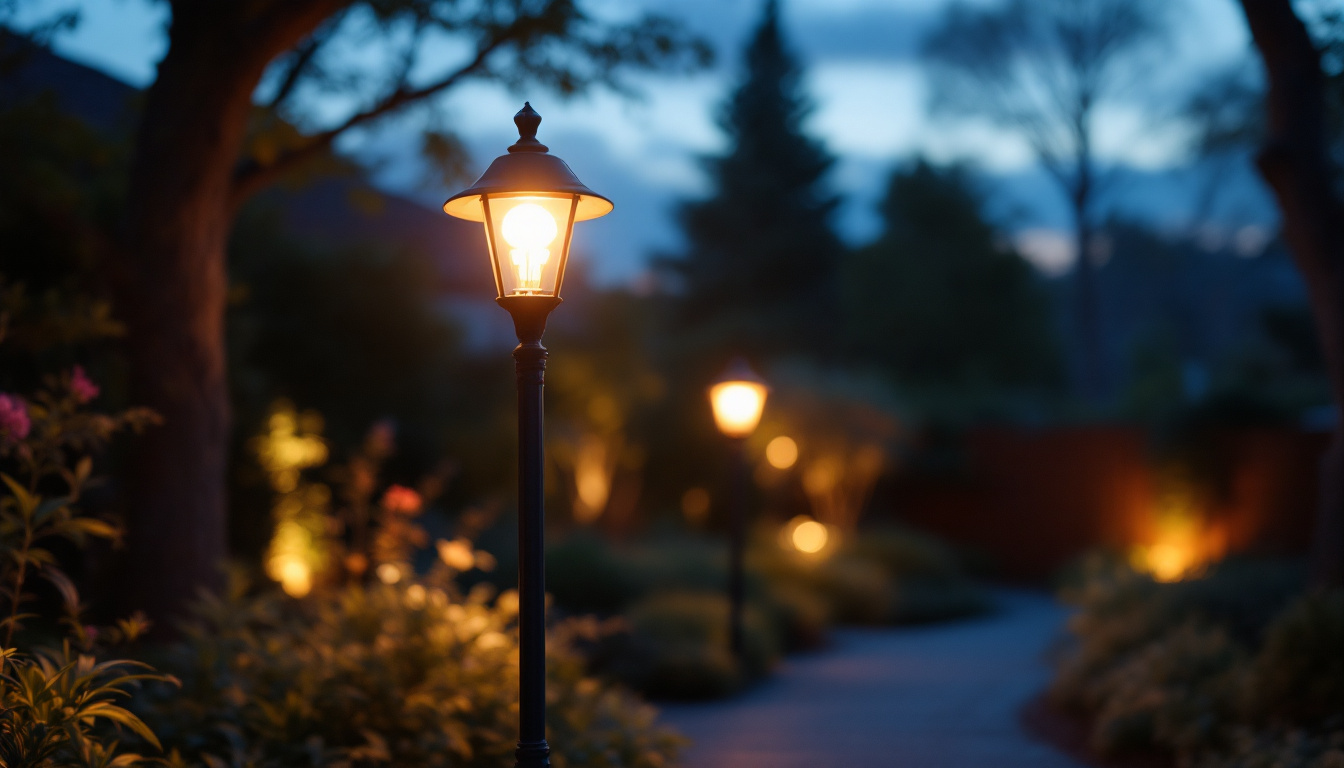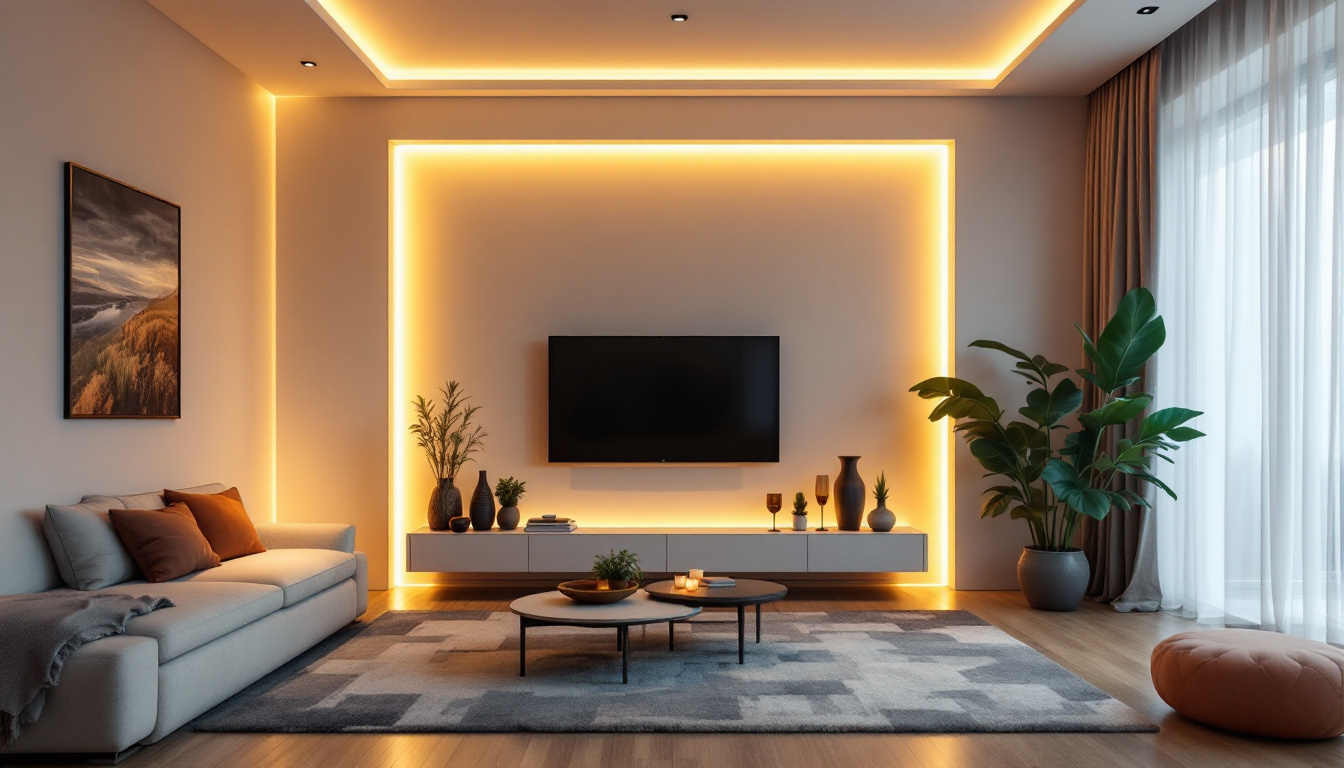
In the realm of outdoor lighting, lamp post light bulbs play a crucial role in enhancing visibility, safety, and aesthetics. However, their impact extends beyond mere illumination. As the world increasingly prioritizes sustainability, understanding the energy efficiency of these bulbs becomes essential for lighting contractors and consumers alike. This article delves into the various types of outdoor lamp post light bulbs, their energy consumption, and the broader implications for energy efficiency.
Outdoor lamp post light bulbs are designed specifically for exterior use, providing illumination for pathways, gardens, and public spaces. They come in various shapes, sizes, and technologies, each with unique characteristics that affect their performance and energy consumption.
There are several types of bulbs available for outdoor lamp posts, including incandescent, halogen, compact fluorescent (CFL), and light-emitting diode (LED) bulbs. Each type has its own advantages and disadvantages, particularly regarding energy efficiency.
Incandescent bulbs, while providing warm light and excellent color rendering, are known for their high energy consumption and short lifespan. Halogen bulbs, a type of incandescent, offer improved efficiency but still fall short compared to newer technologies. These bulbs are often favored for their bright, white light, making them suitable for areas where visibility is crucial, such as driveways and entryways.
compact fluorescent bulbs are more energy-efficient than their incandescent counterparts, using about 70% less energy. However, they contain mercury, which poses disposal challenges. On the other hand, LED bulbs have emerged as the most energy-efficient option, consuming significantly less power and boasting a lifespan that can exceed 25,000 hours. Additionally, LEDs are available in a variety of color temperatures, allowing homeowners to choose between warm, inviting tones or cooler, more modern hues to complement their outdoor spaces.
When evaluating the energy consumption of outdoor lamp post light bulbs, it is essential to consider wattage and lumens. Wattage indicates the amount of energy consumed, while lumens measure the brightness produced. A higher lumen output with lower wattage signifies better energy efficiency.
For instance, a traditional 60-watt incandescent bulb may produce around 800 lumens, whereas an LED bulb can achieve the same brightness with only 10 to 15 watts. This dramatic reduction in energy consumption translates to lower electricity bills and a reduced carbon footprint. Furthermore, many LED bulbs are now designed with smart technology, allowing users to control brightness and color remotely through smartphone apps, enhancing both convenience and energy management.
Moreover, the longevity of LED bulbs means less frequent replacements, contributing to reduced waste and lower maintenance costs over time. This durability is particularly beneficial in outdoor settings, where bulbs are exposed to various weather conditions. In addition to their energy efficiency, many LED options are also designed to withstand moisture and temperature fluctuations, making them ideal for outdoor use. As a result, investing in LED technology not only supports sustainability but also ensures reliable performance in illuminating outdoor spaces throughout the year.
As energy efficiency becomes a focal point in environmental discussions, the role of outdoor lamp post light bulbs cannot be overlooked. Lighting contractors have a unique opportunity to influence sustainability practices by promoting energy-efficient options to their clients.
Switching to energy-efficient outdoor lamp post light bulbs can significantly reduce greenhouse gas emissions. Traditional bulbs consume more electricity, often generated from fossil fuels, contributing to carbon emissions. In contrast, LED bulbs and other energy-efficient technologies help mitigate this impact.
By encouraging the adoption of these efficient lighting solutions, contractors can assist clients in making environmentally responsible choices that align with broader sustainability goals. This shift not only benefits the environment but also enhances the contractor’s reputation as a forward-thinking professional. Moreover, the integration of smart lighting systems, which can adjust brightness based on ambient light and occupancy, further amplifies energy savings while providing enhanced safety and security in outdoor spaces.
Energy-efficient outdoor lamp post light bulbs offer substantial cost savings for clients. Although the initial investment in LED or CFL bulbs may be higher than traditional options, the long-term savings on electricity bills can be significant. Additionally, the extended lifespan of these bulbs reduces replacement frequency, leading to further savings on maintenance and disposal costs.
Lighting contractors can help clients calculate the potential savings over time, illustrating the financial benefits of investing in energy-efficient lighting. This approach not only enhances client satisfaction but also fosters long-term relationships based on trust and value. Furthermore, many municipalities offer incentives or rebates for upgrading to energy-efficient lighting, which can further offset initial costs and encourage clients to make the switch sooner rather than later. By staying informed about these programs, contractors can provide valuable guidance, positioning themselves as indispensable partners in their clients’ sustainability journeys.
When selecting outdoor lamp post light bulbs, several factors come into play. Lighting contractors must consider the specific needs of the space, the desired aesthetic, and the energy efficiency of the options available.
Different outdoor spaces require varying levels of illumination. For instance, a residential garden may need softer lighting for ambiance, while a public park may require brighter, more focused light for safety. Understanding these requirements is crucial for selecting the appropriate bulb type.
Contractors can conduct a thorough assessment of the area to determine the optimal brightness and color temperature. This analysis will guide the selection of the most suitable energy-efficient bulb, ensuring that the lighting meets both functional and aesthetic needs. Additionally, the time of day and seasonal changes can influence lighting requirements; for example, longer daylight hours in summer may allow for lower wattage bulbs, while winter evenings may necessitate brighter lighting to counteract the early darkness.
Another critical consideration is the compatibility of the bulb with existing fixtures. Outdoor lamp posts come in various designs, and not all bulbs fit every fixture. Ensuring that the chosen bulb is compatible with the lamp post design and electrical system is essential for optimal performance.
Contractors should also consider the weather resistance of the bulbs. Outdoor environments expose bulbs to moisture, temperature fluctuations, and other elements, making it vital to select bulbs specifically designed for outdoor use. Moreover, the type of light source—whether LED, incandescent, or fluorescent—can affect not only compatibility but also the overall energy consumption and lifespan of the lighting solution. LEDs, for instance, are known for their durability and longevity, making them an increasingly popular choice for outdoor applications, while incandescent bulbs may offer a warmer light but at the cost of higher energy usage and shorter lifespan.
The lighting industry is continually evolving, with new technologies and trends emerging to enhance energy efficiency and sustainability. Staying informed about these developments is crucial for lighting contractors who wish to remain competitive and provide the best solutions for their clients.
One of the most significant trends in outdoor lighting is the rise of smart lighting technology. Smart outdoor lamp post light bulbs can be controlled remotely via smartphone apps or integrated into home automation systems. This technology allows users to adjust brightness, set schedules, and even change colors, enhancing both convenience and energy efficiency.
Smart bulbs can also be equipped with motion sensors, ensuring that lights only activate when needed, further reducing energy consumption. By educating clients about these innovations, contractors can position themselves as knowledgeable professionals who offer cutting-edge solutions. Additionally, smart lighting systems can be programmed to sync with other smart home devices, such as security cameras and alarms, creating a cohesive and responsive outdoor environment that enhances safety and comfort.
Another trend gaining traction is the use of solar-powered outdoor lamp post light bulbs. These bulbs harness solar energy during the day and store it for use at night, eliminating electricity costs entirely. Solar lighting is particularly appealing for remote areas or locations where traditional wiring may be impractical.
While solar-powered options may have limitations in terms of brightness and runtime, advancements in technology are continually improving their efficiency and performance. Contractors should explore these options and present them to clients as sustainable alternatives that contribute to energy efficiency. Furthermore, the aesthetic appeal of modern solar lights has improved significantly, with designs that blend seamlessly into various landscapes and architectural styles, making them not just functional but also an attractive addition to outdoor spaces.
In addition to these benefits, solar-powered lighting systems often come with built-in sensors that adjust brightness based on ambient light levels, ensuring optimal illumination throughout the night while conserving energy during moonlit evenings. This adaptability not only enhances the user experience but also aligns with the growing trend of environmentally conscious living, appealing to clients who prioritize sustainability in their purchasing decisions.
In conclusion, outdoor lamp post light bulbs significantly impact energy efficiency and sustainability. By understanding the various types of bulbs, their energy consumption, and the broader implications for the environment, lighting contractors can make informed recommendations to their clients.
Emphasizing the benefits of energy-efficient lighting not only helps reduce carbon footprints and save costs but also positions contractors as leaders in sustainable practices. As the industry continues to evolve, staying abreast of trends such as smart lighting and solar-powered options will be crucial for meeting the changing needs of clients.
Ultimately, the choice of outdoor lamp post light bulbs is not merely a matter of illumination; it is a decision that reflects a commitment to energy efficiency and environmental stewardship. By guiding clients toward energy-efficient solutions, lighting contractors can contribute to a brighter, more sustainable future.
Ready to lead the charge in energy-efficient outdoor lighting? LumenWholesale is here to support you every step of the way. Our extensive selection of spec-grade lighting products is designed to meet the highest industry standards, ensuring you provide your clients with reliable, high-performance lighting solutions. Say goodbye to inflated markups and hello to superior quality at unbeatable wholesale prices. Plus, with free shipping on bulk orders, you can stock up on premium lighting without the worry of hidden fees. Make the smart choice for your business and the environment. Discover the perfect blend of quality, affordability, and convenience at LumenWholesale – Wholesale Lighting at the Best Value.

Discover how daylight sensors can revolutionize your lighting projects by enhancing energy efficiency and creating optimal illumination.

Explore the latest advancements in lighting technologies that are revolutionizing efficiency for lighting contractors.

Discover how hardwire LED strips are revolutionizing energy efficiency in modern lighting solutions.

Discover how motion sensors can revolutionize your lighting solutions by enhancing efficiency and convenience.